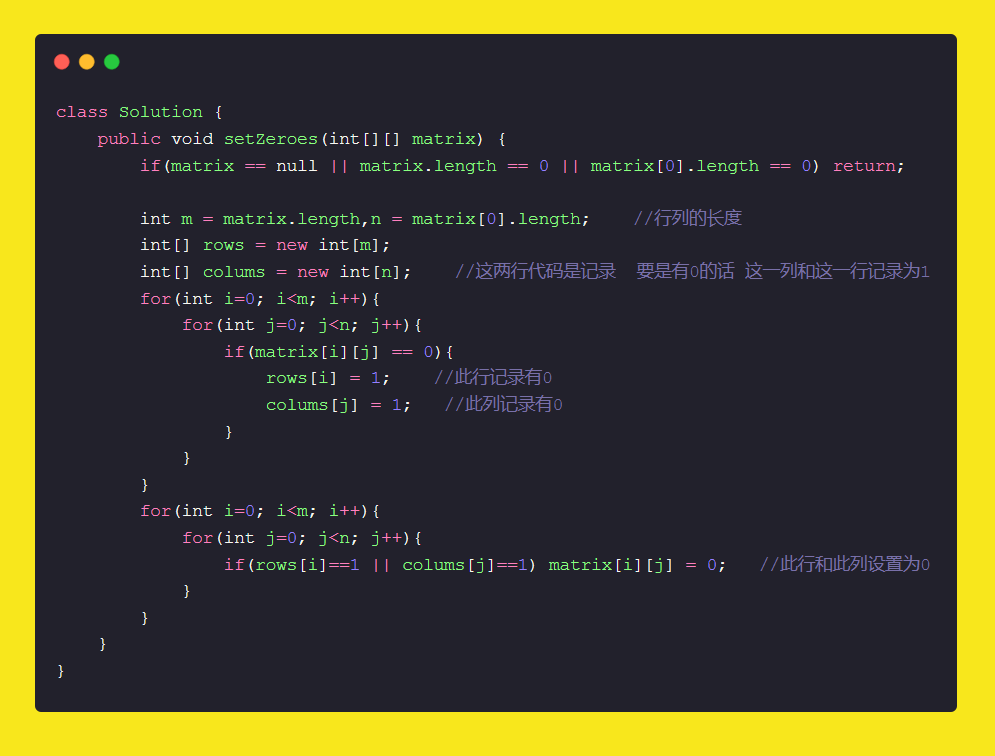标签:int 长度 商业 代码 etc 设置 著作权 mamicode new
示例 1:
输入:
[
[1,1,1],
[1,0,1],
[1,1,1]
]
输出:
[
[1,0,1],
[0,0,0],
[1,0,1]
]
示例 2:
输入:
[
[0,1,2,0],
[3,4,5,2],
[1,3,1,5]
]
输出:
[
[0,0,0,0],
[0,4,5,0],
[0,3,1,0]
]
作者:力扣 (LeetCode)
链接:https://leetcode-cn.com/leetbook/read/array-and-string/ciekh/
来源:力扣(LeetCode)
著作权归作者所有。商业转载请联系作者获得授权,非商业转载请注明出处。
class Solution {
public void setZeroes(int[][] matrix) {
if(matrix == null || matrix.length == 0 || matrix[0].length == 0) return;
int m = matrix.length,n = matrix[0].length; //行列的长度
int[] rows = new int[m];
int[] colums = new int[n]; //这两行代码是记录 要是有0的话 这一列和这一行记录为1
for(int i=0; i<m; i++){
for(int j=0; j<n; j++){
if(matrix[i][j] == 0){
rows[i] = 1; //此行记录有0
colums[j] = 1; //此列记录有0
}
}
}
for(int i=0; i<m; i++){
for(int j=0; j<n; j++){
if(rows[i]==1 || colums[j]==1) matrix[i][j] = 0; //此行和此列设置为0
}
}
}
}

标签:int 长度 商业 代码 etc 设置 著作权 mamicode new
原文地址:https://www.cnblogs.com/xiaofff/p/14398531.html